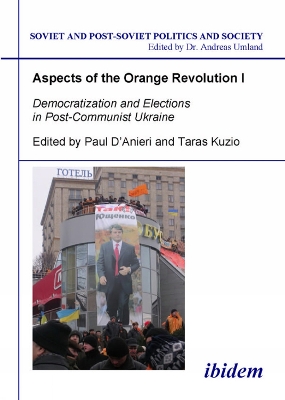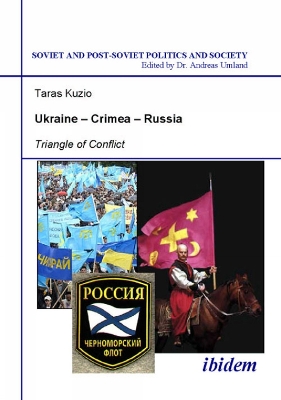Soviet and Post-Soviet Politics and Society
2 total works
Aspects of the Orange Revolution I - Democratization and Elections in Post-Communist Ukraine
by Paul D'Anieri and Taras Kuzio
Published 8 December 2021
Ukraine's 2004 presidential election was falsified, spurring the Orange Revolution. To many observers, the Orange Revolution was a shock, and the stolen elections a recent development. However, both the election fraud and the effort to topple the government of Leonid Kuchma emerged from political dynamics that had appeared in earlier Ukrainian elections. In this path breaking volume, leading scholars place Ukraine's 2004 Orange Revolution in the longer perspective of Ukraine's post-Soviet electoral politics. Covering both presidential and parliamentary elections over the entire post-Soviet period, the chapters clarify the manner in which earlier elections had emerged as part of the battle for power in Ukraine well before 2004. The opposition that came to power in 2004 had also won the 2002 elections and had developed its strategies during opposition protests that had been catalysed by the Kuchmagate crisis in 2000. The evolution of the dynamics that led to the fraudulent 2004 election reveals that the events of 2004 represented continuity as well as change. By placing the 2004 elections within a longer trajectory, the volume enriches our understanding of the Orange Revolution and helps us to understand the difficulties faced in consolidating Ukraine's democratic breakthrough following the Orange Revolution. The volume contains an introduction to Aspects of the Orange Revolution I-VI by Andreas Umland followed by eight chapters by Robert K. Christensen, Edward R. Rakhimkulov and Charles Wise, Paul D'Anieri, Robert Kravchuk and Victor Chudowsky, Paul Kubicek, Taras Kuzio, Lucan Way, and Anna Makhorkina. These authors bring complex and varied perspectives that situate Ukraine's post-Soviet elections in economic reforms, constitutional law, foreign policy objectives of integrating into Europe, as well as in the broader context of the rough and tumble competition for political control of Ukraine.
The Crimea was the only region of Ukraine in the 1990s where separatism arose and inter-ethnic conflict potentially could have taken place between the Ukrainian central government, ethnic Russians in the Crimea, and Crimean Tatars. Such a conflict would have inevitably drawn in Russia and Turkey. Russia had large numbers of troops in the Crimea within the former Soviet Black Sea Fleet. Ukraine also was a nuclear military power until 1996.This book analyses two inter-related issues. Firstly, it answers the question why Ukraine-Crimea-Russia traditionally have been a triangle of conflict over a region that Ukraine, Tatars and Russia have historically claimed. Secondly, it explains why inter-ethnic violence was averted in Ukraine despite Crimea possessing many of the ingredients that existed for Ukraine to follow in the footsteps of inter-ethnic strife in its former Soviet neighbourhood in Moldova (Trans-Dniestr), Azerbaijan (Nagorno Karabakh), Georgia (Abkhazia, South Ossetia), and Russia (Chechnya).

